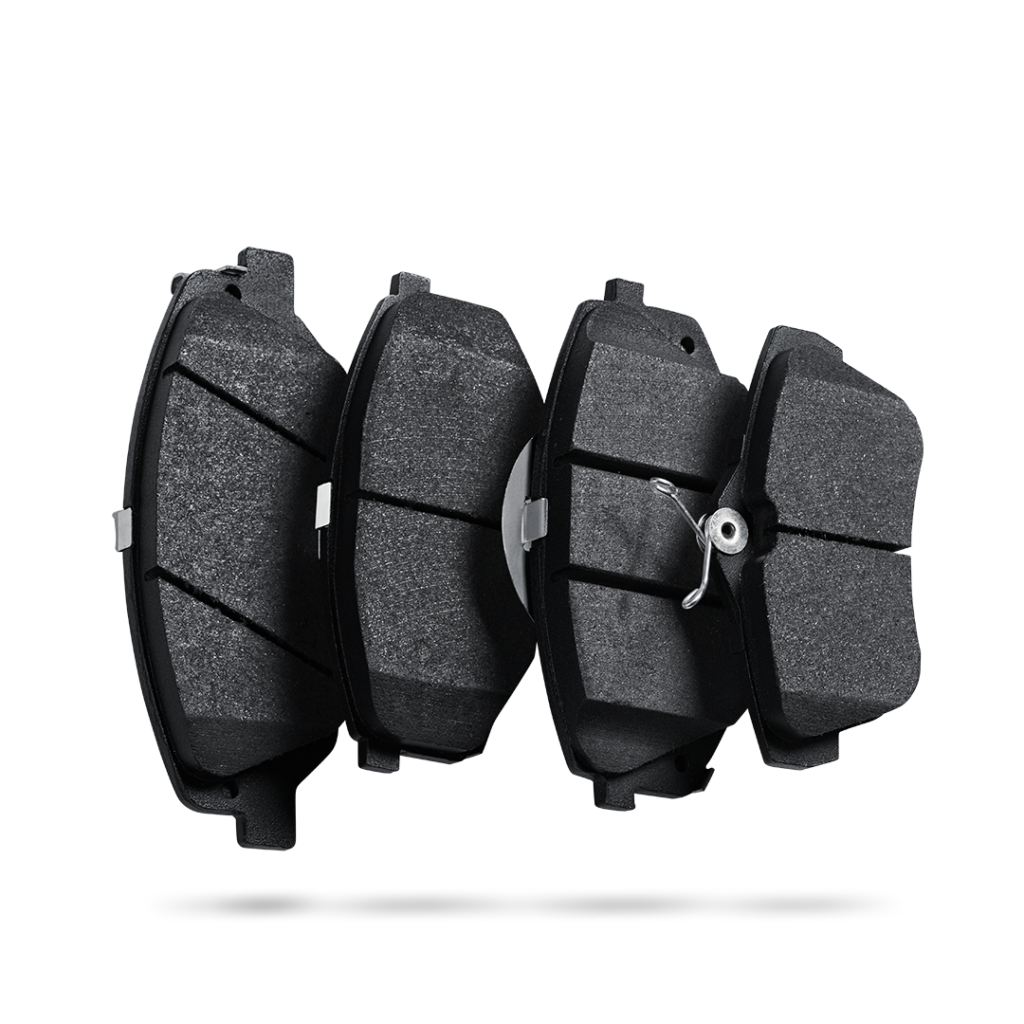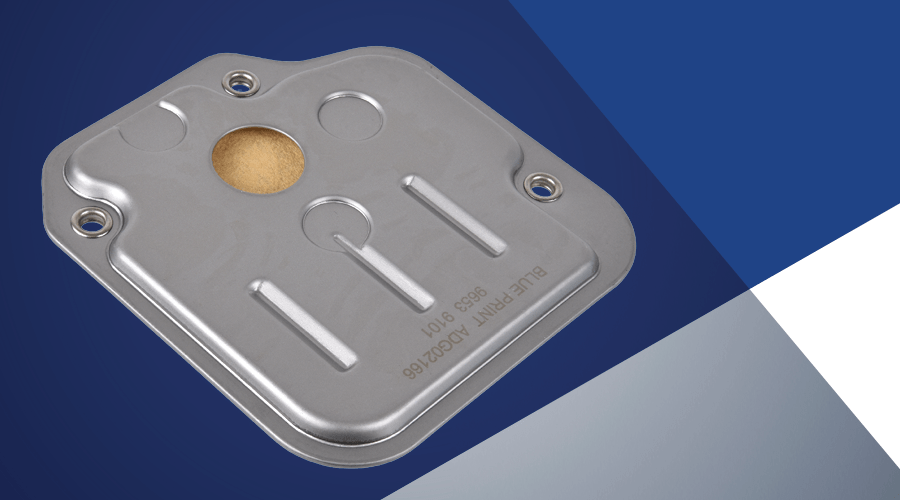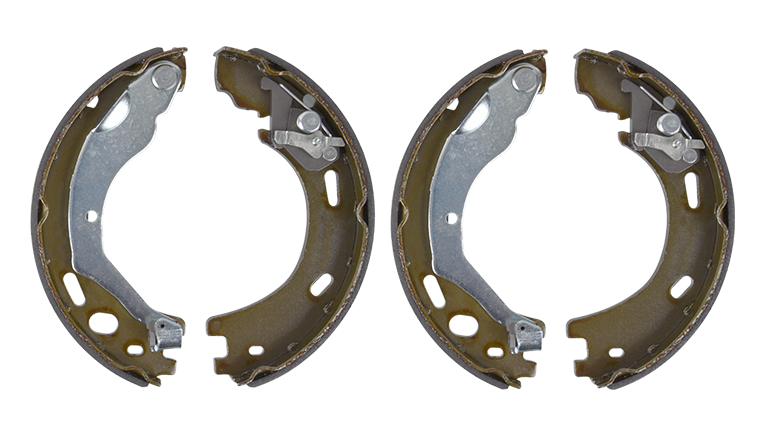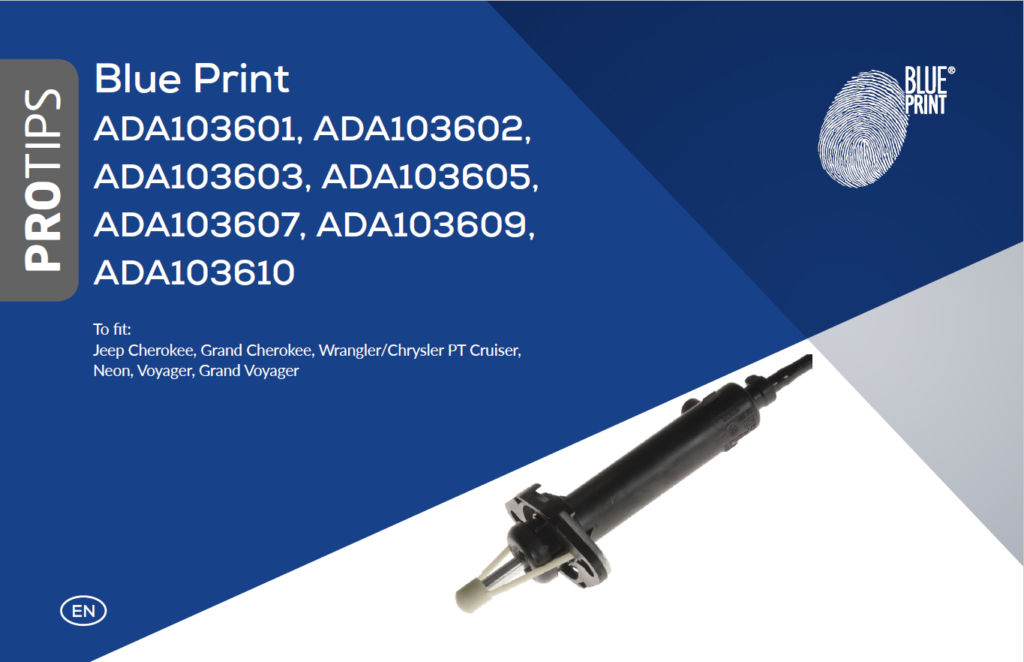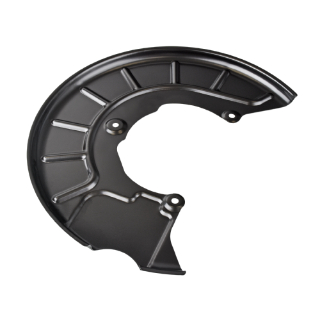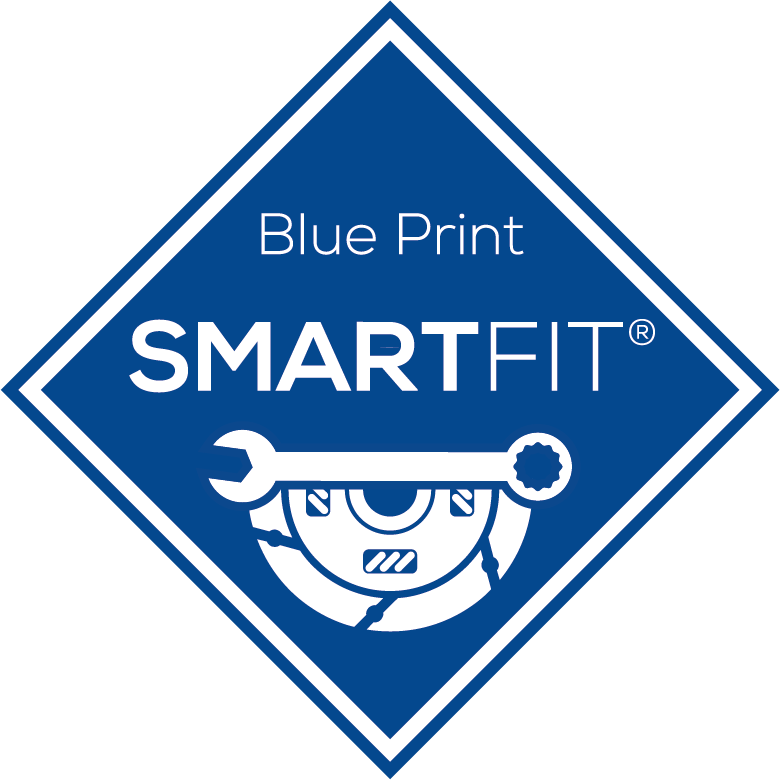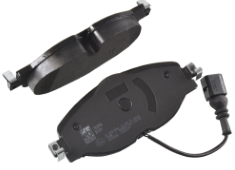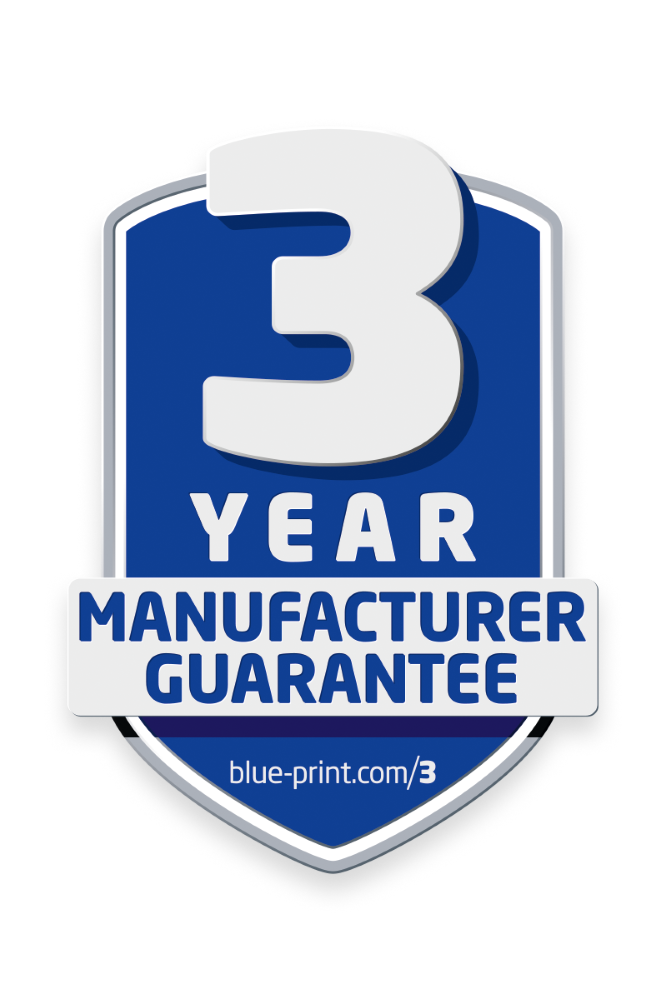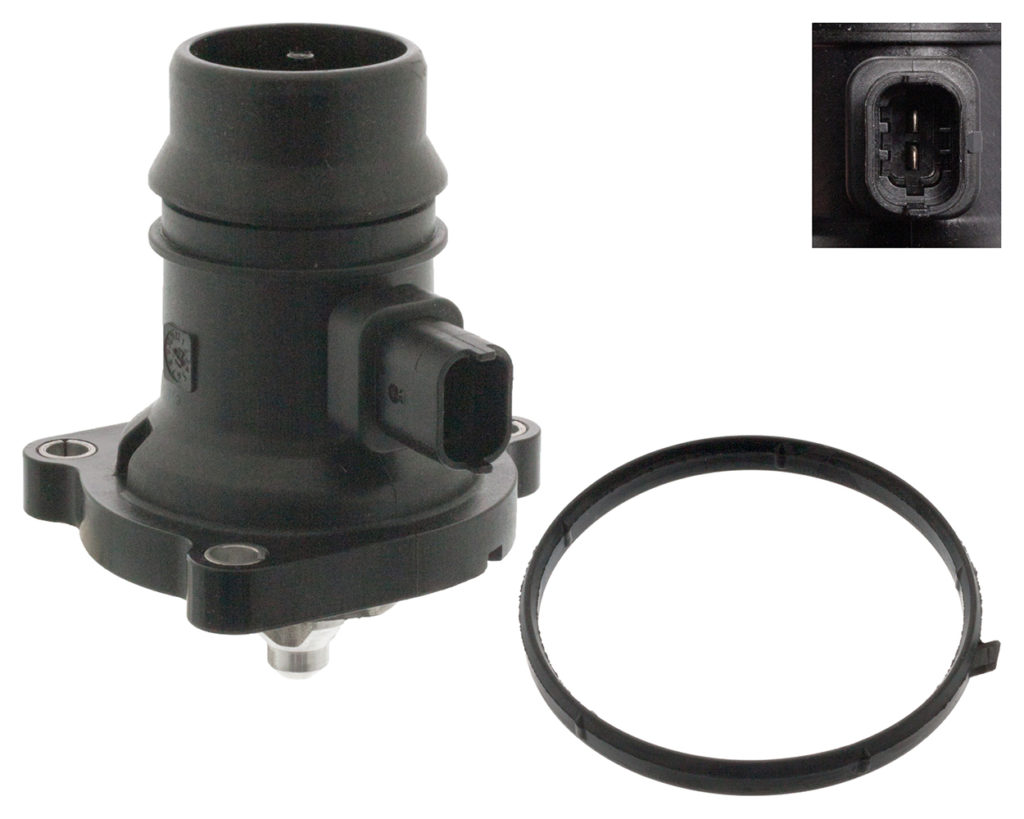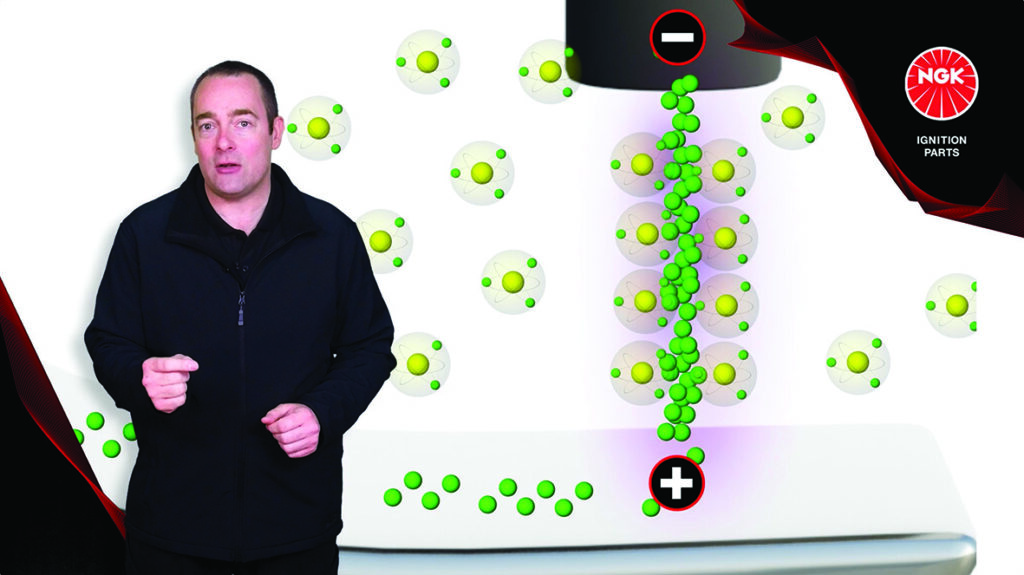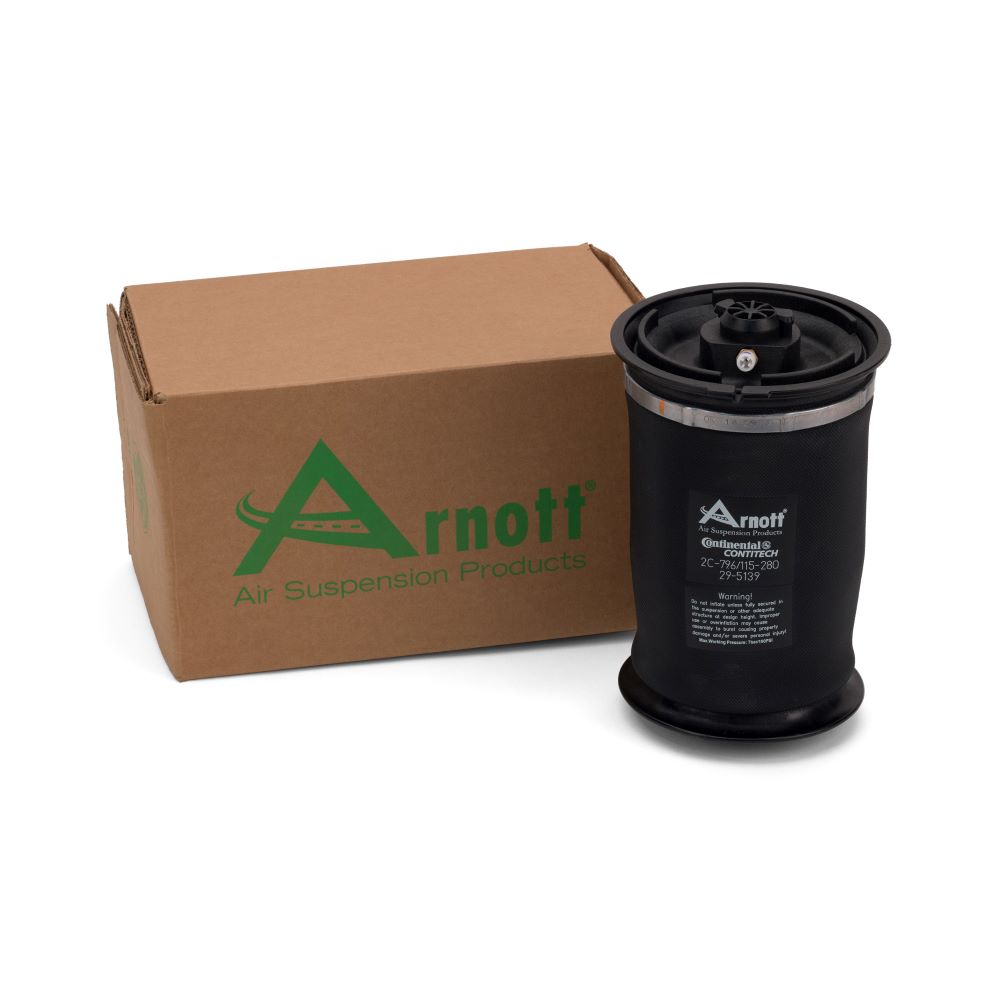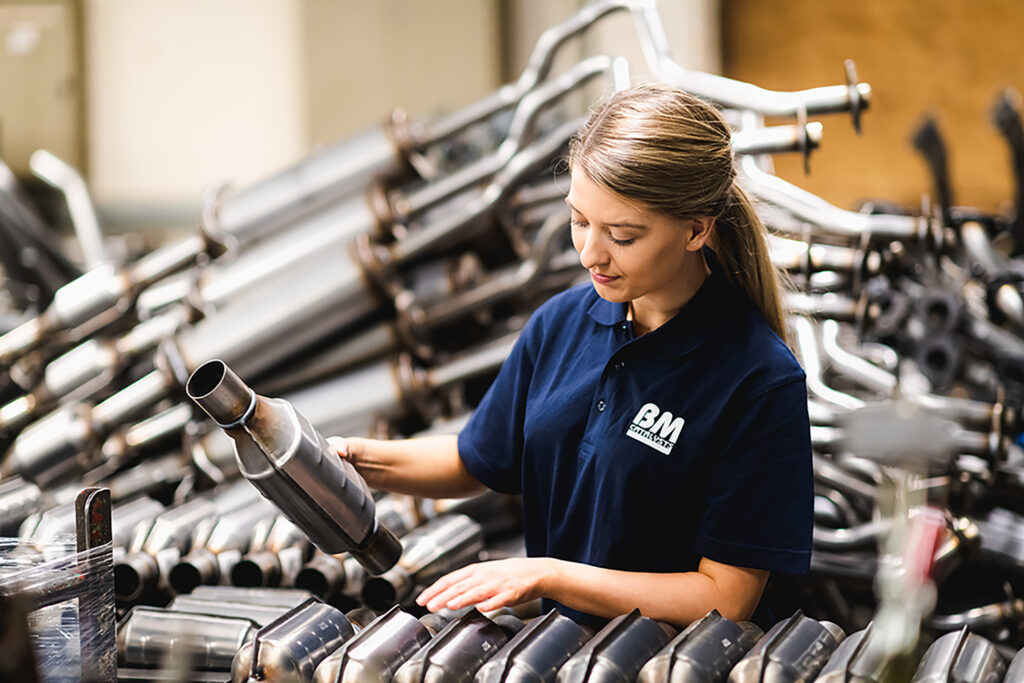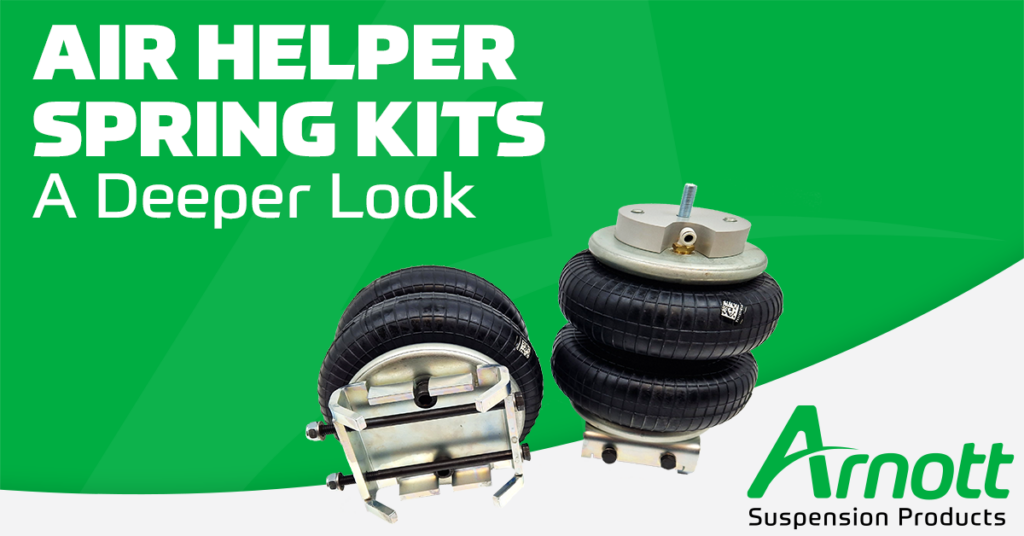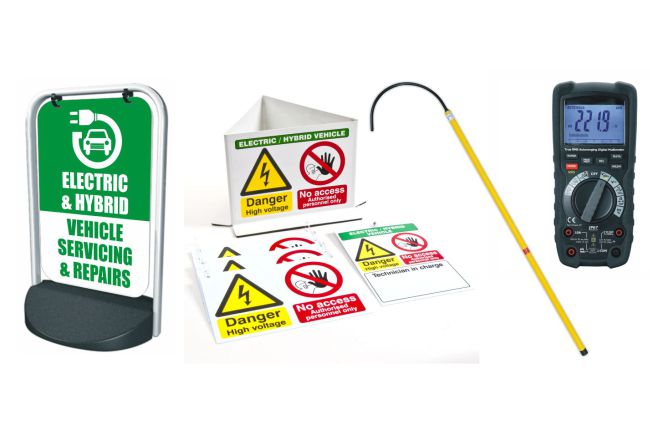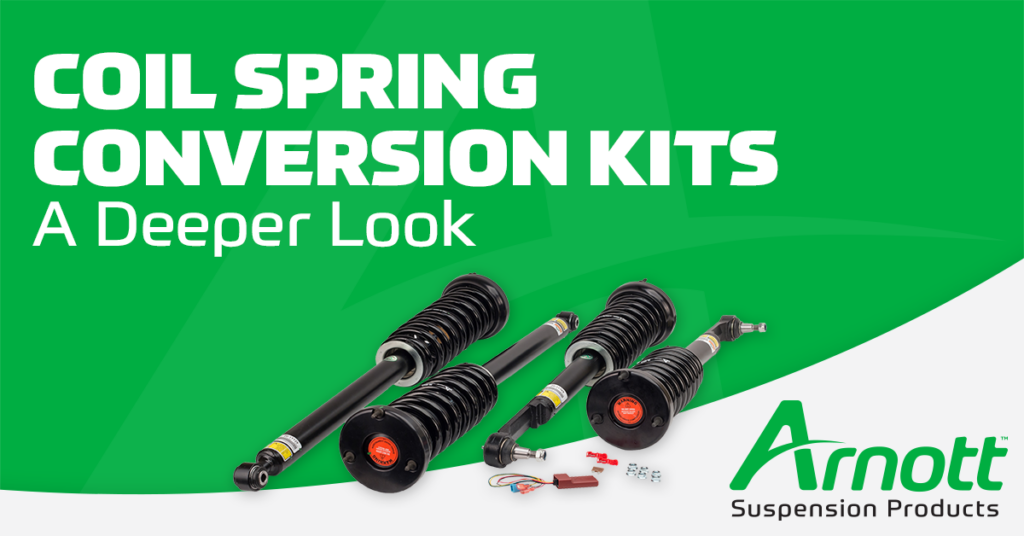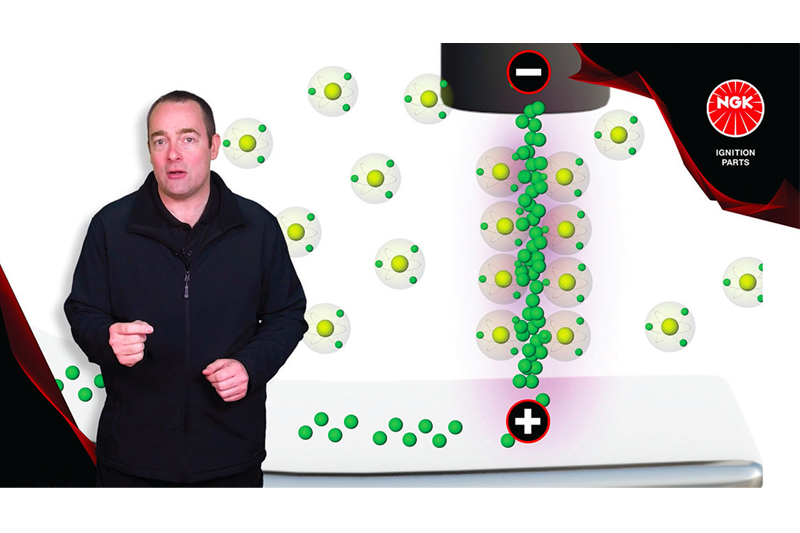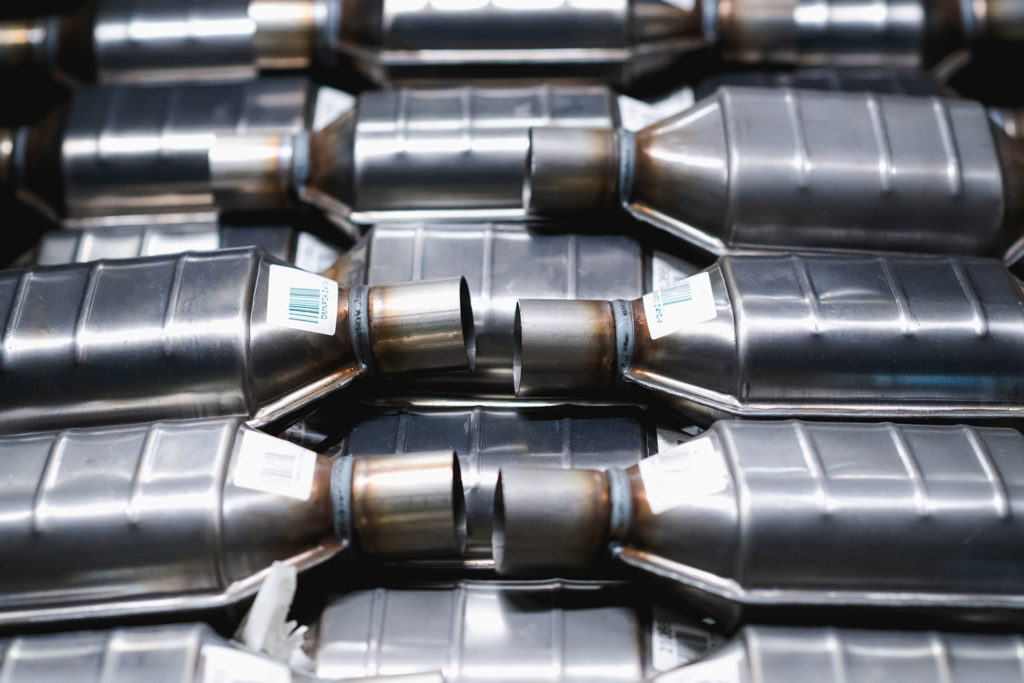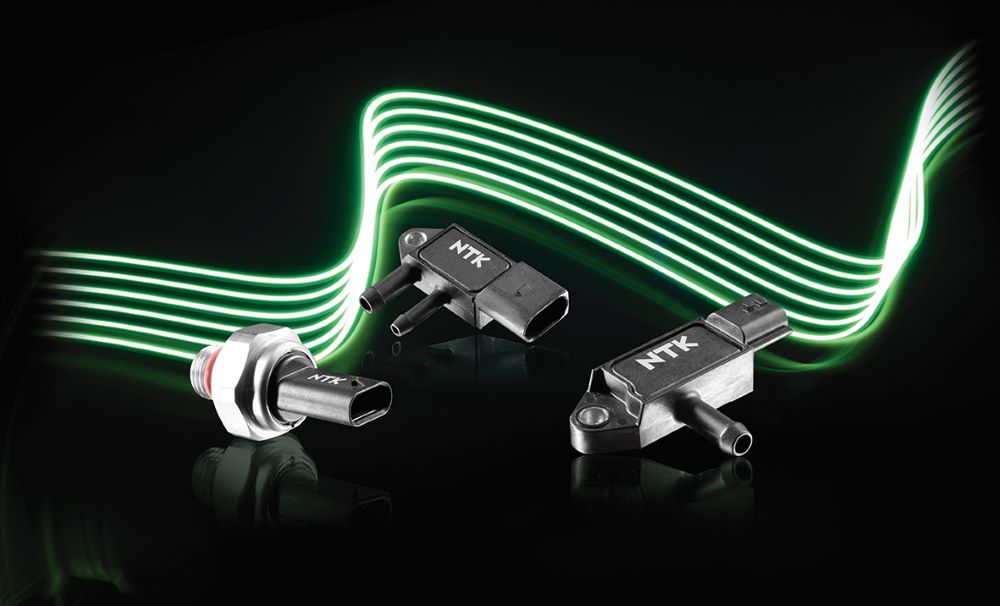Every brake pad set from Blue Print features high shear strength, excellent stability friction coefficient, low noise levels and minimum vibration, which provides a secure feeling for the driver at the brake pedal. This makes braking progressive and comfortable.
A decisive factor for optimal brake pad quality is the individual components which form each pad. Combining these elements provides reliability and safety.
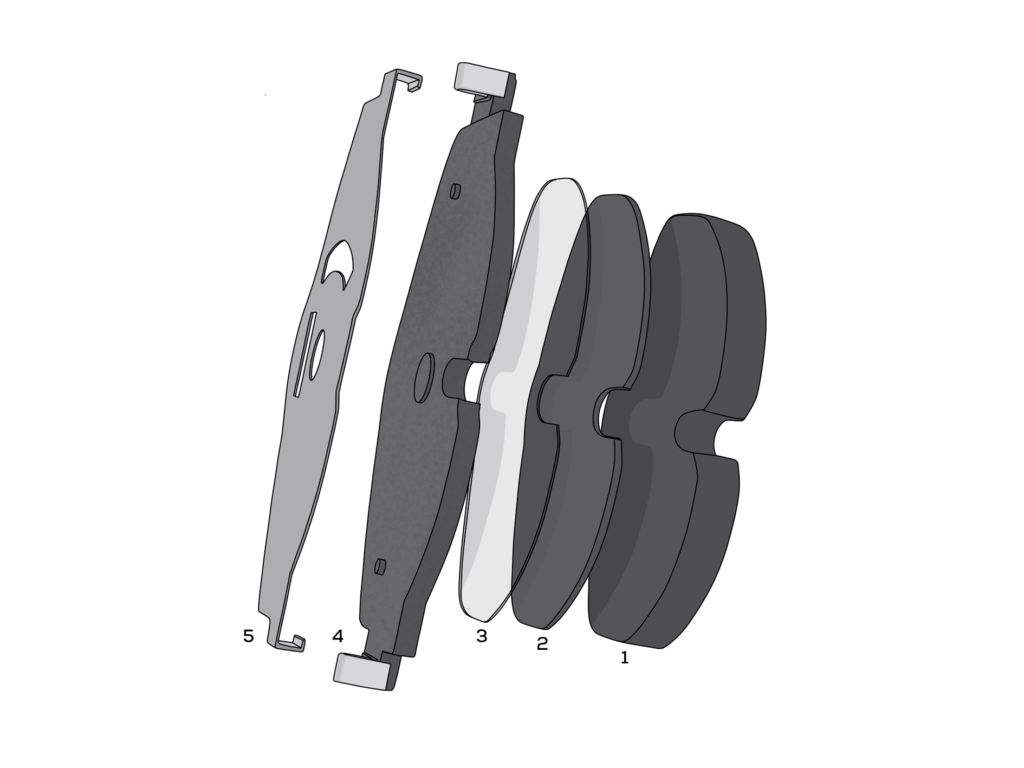
Brake Pad Elements
1. Friction Material: Specifically matched to particular vehicle type and model.
2. Intermediate Layer: Optimise compressibility to reduce heat transfer.
3. Adhesive: High shear strength; bonds friction material to the pad carrier.
4. Backing Plate: High material strength.
5. Shim: Reduces brake noise.
Friction Material
Brake pad friction materials are required to perform under a variety of conditions. These include vehicle speed, laden weight, or vast temperature changes from brake usage. They are also required to perform under a variety of environmental conditions such as humidity, water and road surface conditions. A brake pad must have excellent mechanical strength and durability for long service life.
The friction material is made from a blend of many different raw materials depending on the vehicle application. The raw materials are divided into three categories: bonding material, stiffener and friction adjustment material.
The bonding material hardens the raw material to give it strength. The stiffener provides the friction materials further strengthening properties. For this, various kinds of organic and inorganic fibres are used.
The friction adjustment material is used for strengthening the effectiveness or stabilising the performance of the friction materials.
Brake Pad Manufacturing
After the friction material has been chosen, the production process starts with fine blanked backplates. These backplates are shot blasted and degreased to increase the adhesion of the glue onto the backplate. Afterwards, the pad mixture is pressed onto the backplate. The combined elements are then permanently unified in the curing furnace.
An optimal surface is created by slotting and chamfering the friction material. This is followed by an anti-corrosion treatment of powder coating for the brake pad. Hardware is then added as required – such as the fitment of shims, warning wires and springs.
Main Performance Requirements for Friction Materials Are:
- Optimal efficiency, i.e. appropriate friction coefficient
- Stable effectiveness under various usages and/or environmental conditions
- Mechanical strength and the ability to withstand thermal disturbances
- High level of durability
- Minimised brake squeal, noise and vibrations
- Low wear to the contact material
- Low thermal conductivity
Why Blue Print Brake Pads
Extensive Range – An extensive All-Makes range of more than 1,250 brake friction components for Asian and European vehicle applications. Coverage of over 96% of all popular passenger cars and LCVs on European roads (launched from the year 2000 and onwards)
Cataloguing – Easy to find the right discs you need by using our online catalogue Partsfinder, search by VRM or Vehicle Make & Model. We use Official Manufacturer Electronic Parts Catalogues ensures ultimate levels of accuracy within our cataloguing.
Accessories – All brake pad sets are specified to be supplied with shims, clips, wear indicators, bolts, springs, etc., where appropriate.
R90 Updates – We work hard to ensure that our R90 certification is updated frequently with newly launched vehicle applications to guarantee full compliance with the regulation.
Packaging – All Blue Print brake pads come in new special packaging illustrated by technical drawings and are ECE R90 compliant when applicable.
Want quality and value? Choose Blue Print! Your Premium Quality Aftermarket Solution!


